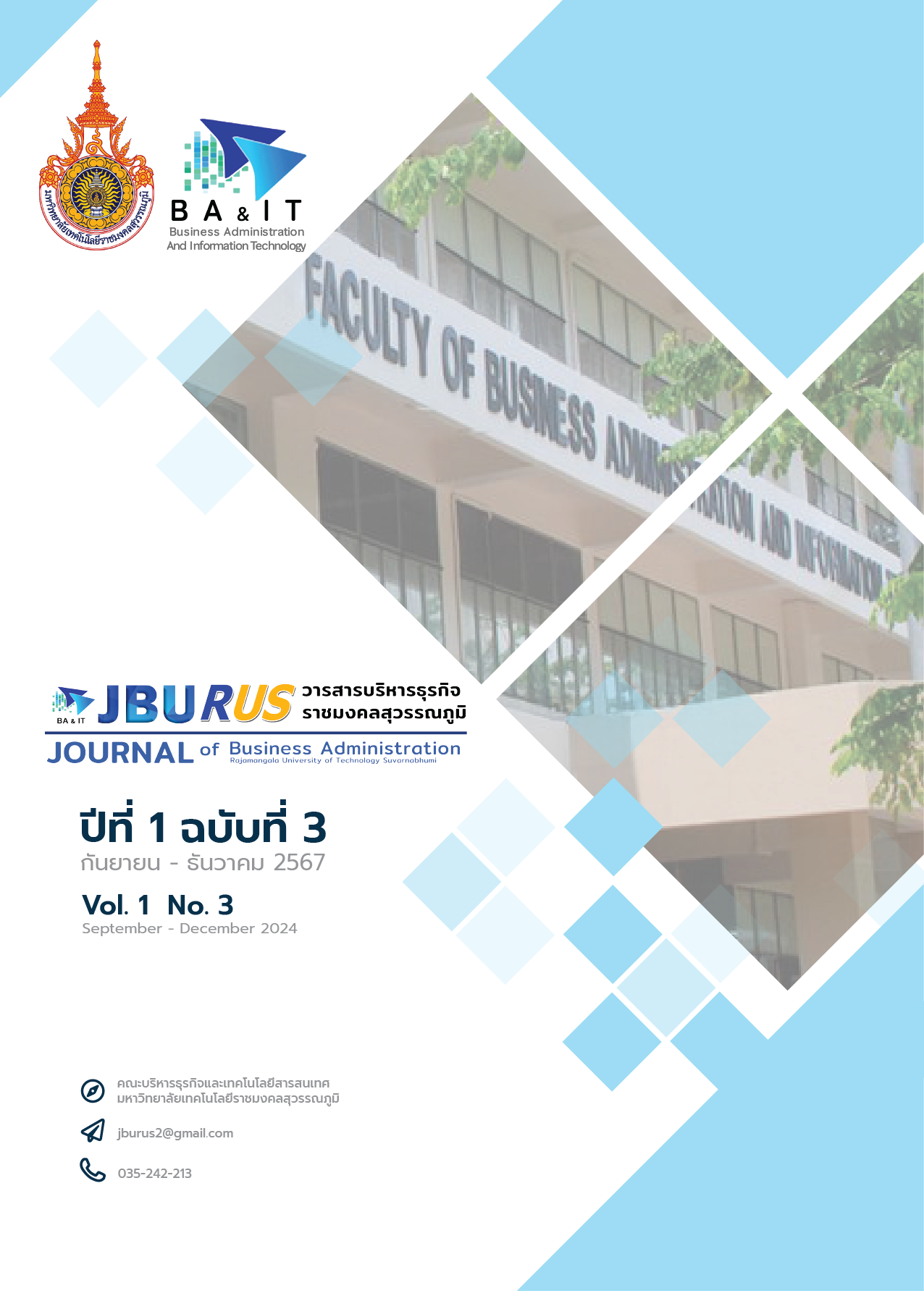Factors for becoming a modern world-class innovative educational institution
Keywords:
Factors for being an innovative educational institution, Innovative educational institution, New world innovationAbstract
The article, “Factors of Innovative Educational Institutions in the Modern World,” aims to present the concept of factors affecting the emergence of innovative educational institutions in the modern world as a guideline for educational institution development, including allowing educational institution administrators, teachers, and personnel in educational institutions to see the importance of innovation development, both innovations in educational institution administration and innovations in teaching and learning management, to develop the quality of students to the highest quality. It focuses on being an educational organization that creates new things or develops and modifies the old things in terms of working methods and teaching and learning management, and makes the school’s educational management more efficient and better in the modern world that is changing rapidly. By studying data from the concept of factors of innovative educational institutions, it was found that for an educational institution to become an innovative educational institution in the modern world, there are 4 factors: 1. Innovative leadership of administrators 2. Organizational culture 3. Support system 4. Organizational atmosphere. These factors will affect the emergence of innovative educational institutions, indicating 5 characteristics of innovative educational institutions: 1. Vision, strategy, and goals 2. Structure 3. Personnel 4. Communication 5. Knowledge and information management
References
ขวัญชนก แสงท่านั่ง. (2563). รูปแบบการพัฒนาโรงเรียนประถมศึกษาสู่การเป็นองค์กรนวัตกรรม. กำแพงเพชร: มหาวิทยาลัยราชภัฏกำแพงเพชร.
จักภัทสรัณย์ ไตรรัตน์. (2563) การพัฒนาสถานศึกษาสู่องค์กรนวัตกรรม: กรณีศึกษาโรงเรียนในสหวิทยาเขตวิภาวดี. ใน วารสารการประชุมนำเสนอผลงานวิจัยระดับบัณฑิตศึกษามหาวิทยาลัยรังสิต. มหาวิทยาลัยรังสิต.
ชวลิต ไทรรัตน์. (2563). การพัฒนาโรงเรียนสู่องค์กรนวัตกรรม: กรณีศึกษากลุ่มโรงเรียนวิภาวดี สังกัดสำนักงานเขตพื้นที่การศึกษามัธยมศึกษาเขต 2. ใน การประชุมวิจัยบัณฑิตศึกษามหาวิทยาลัยรังสิต ครั้งที่ 15 (น. 1903-1914). มหาวิทยาลัยรังสิต.
สมพงษ์ ธรรมทัศนานนท์. (2564). การบริหารจัดการเพื่อองค์กรทางการศึกษาที่มีนวัตกรรม. มหาสารคาม: ทศลิลา การพิมพ์.
สุริศา ริมคีรี. (2562). การพัฒนาดัชนีชี้วัดองค์กรนวัตกรรมทางการศึกษาของโรงเรียนมัธยมศึกษาสังกัดสำนักงานคณะกรรมการการศึกษาขั้นพื้นฐาน. ชลบุรี: มหาวิทยาลัยบูรพา.
อนุพงษ์ ชุมแวงวาปี. (2560). รูปแบบการพัฒนาองค์กรนวัตกรรมสำหรับโรงเรียนมัธยมศึกษา สังกัดสำนักงานคณะกรรมการการศึกษาขั้นพื้นฐาน. ชลบุรี: มหาวิทยาลัยบูรพา.
Amabile, T. M., & Pratt, M. G. (2021). The dynamic componential model of creativity and innovation in organizations: Making progress, making meaning. Research in Organizational Behavior, 41, Article 100134. https://doi.org/10.1016/j.riob.2021.100134
Likert, R. (1967). The human organization: Its management and value. McGraw-Hill.
Nonaka, I., & Takeuchi, H. (2020). The wise company: How companies create continuous innovation. Oxford University Press.
Phothong, W. (2023). Creating innovators for construct educational innovation. (P.d).
Tushman, M. L., & O'Reilly, C. A. (1996). Ambidextrous organizations: Managing evolutionary and revolutionary change. California Management Review, 38(4), 8-30.
Downloads
Published
How to Cite
Issue
Section
License
Copyright (c) 2024 คณะบริหารธุรกิจและเทคโนโลยีสารสนเทศ มหาวิทยาลัยเทคโนโลยีราชมงคลสุวรรณภูมิ

This work is licensed under a Creative Commons Attribution-NonCommercial-NoDerivatives 4.0 International License.




